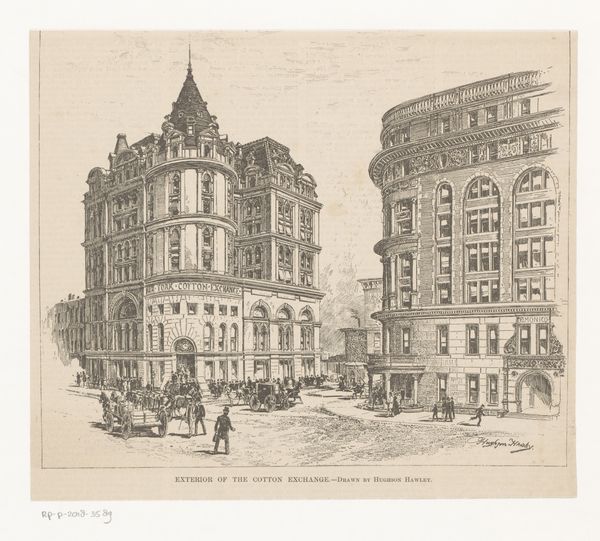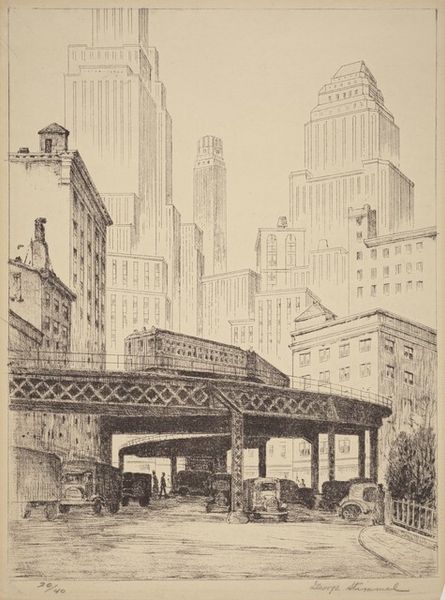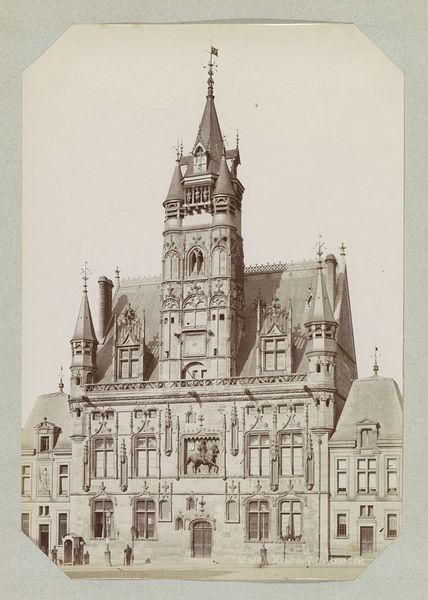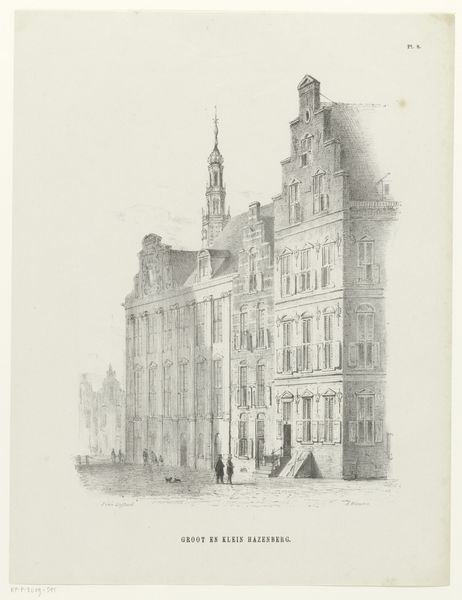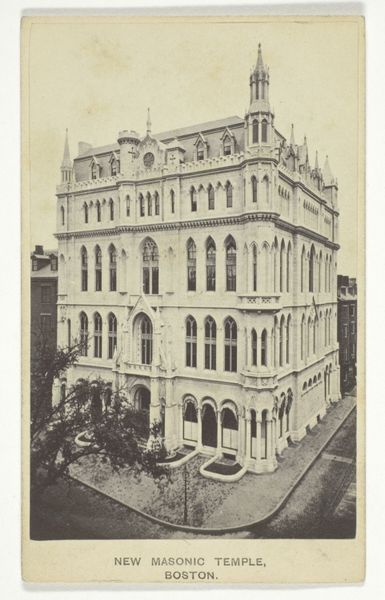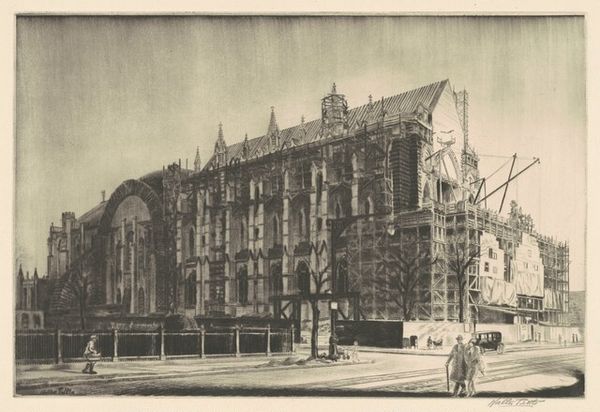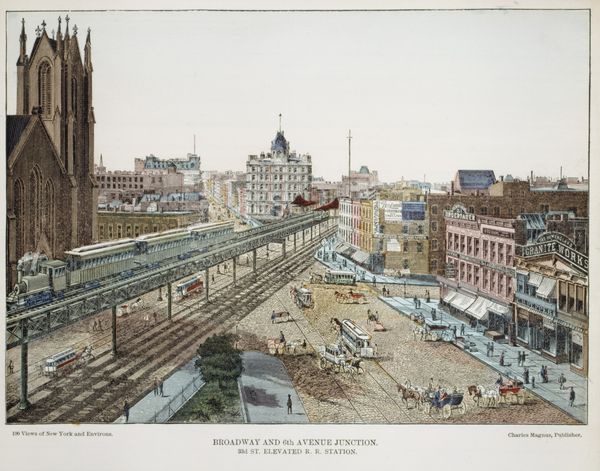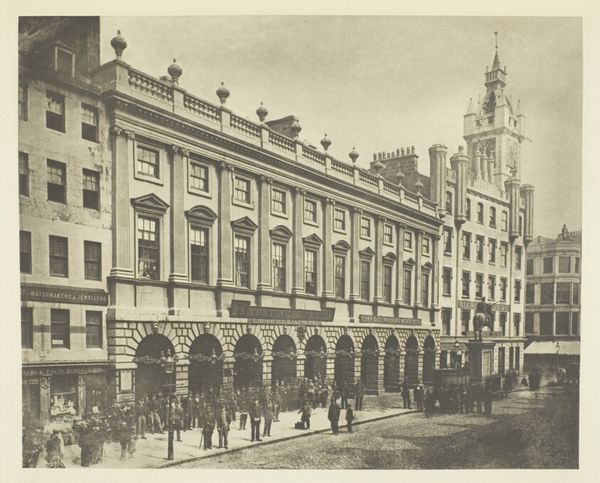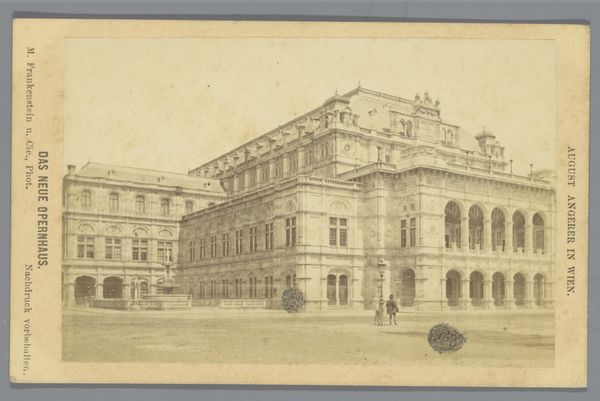
drawing, painting, print, watercolor, architecture
#
drawing
#
painting
# print
#
watercolor
#
architecture drawing
#
cityscape
#
watercolour illustration
#
watercolor
#
architecture
#
realism
Dimensions: image: 53.7 x 75.7 cm (21 1/8 x 29 13/16 in.) sheet: 64.4 x 85.9 cm (25 3/8 x 33 13/16 in.)
Copyright: National Gallery of Art: CC0 1.0
Curator: Richard Haas' "The State Capital, Albany, NY," created around 1980, presents a fascinating study in architectural forms using watercolor, paint, and printmaking techniques. What strikes you first about it? Editor: The composition is what immediately grabs my attention. The stark contrast between the ornate Capitol building and the monolithic, modern skyscrapers flanking it. It feels almost like a deliberate visual commentary on different eras of governance and power structures. Curator: Absolutely. The State Capital, in its late 19th-century opulence, speaks to a different concept of civic authority compared to the impersonal, corporate aesthetic of those flanking towers. And Haas positions it centrally, reclaiming that historical narrative. Considering his broader body of work, which often critiques urban planning, what do you think this composition suggests? Editor: Knowing his other work, I think it is intentionally unsettling. The anachronism feels deliberate, prompting questions about whose interests are served by these different forms of architecture. Who benefits from these spaces, and what messages do they convey about access, control, and ultimately, the wielding of power within the city? The location depicted also emphasizes that political message. Curator: The almost clinical precision of his rendering certainly invites that reading. There's an ambiguity here; it simultaneously celebrates architectural beauty and questions the values it represents. Moreover, the choice of watercolor lends the scene an atmospheric quality, yet doesn’t detract from the overall Realism. It almost softens the rigid socio-political critique to allow room for other possibilities. What did the public discourse at that time suggest? Editor: The 1980s were a period of intense debate around urban development and historic preservation. This piece would undoubtedly tap into that tension, becoming a visual prompt for wider civic conversations on legacy, power, and community voice in urban design. Was it a celebration of local traditions or another power structure? Haas forces us to examine these issues head-on, using the Capitol building as a potent, unavoidable symbol. Curator: I think the brilliance of this artwork lies in its multilayered approach. We've unpacked not just aesthetic choices, but how they reflect deeper societal anxieties. It encourages us to question our surroundings and what we prioritize through architectural manifestation. Editor: Indeed. It leaves me pondering the future of our cities and whose stories will ultimately be told through their skylines. It seems these issues are never-ending but remain at the core of modern society.
Comments
No comments
Be the first to comment and join the conversation on the ultimate creative platform.
